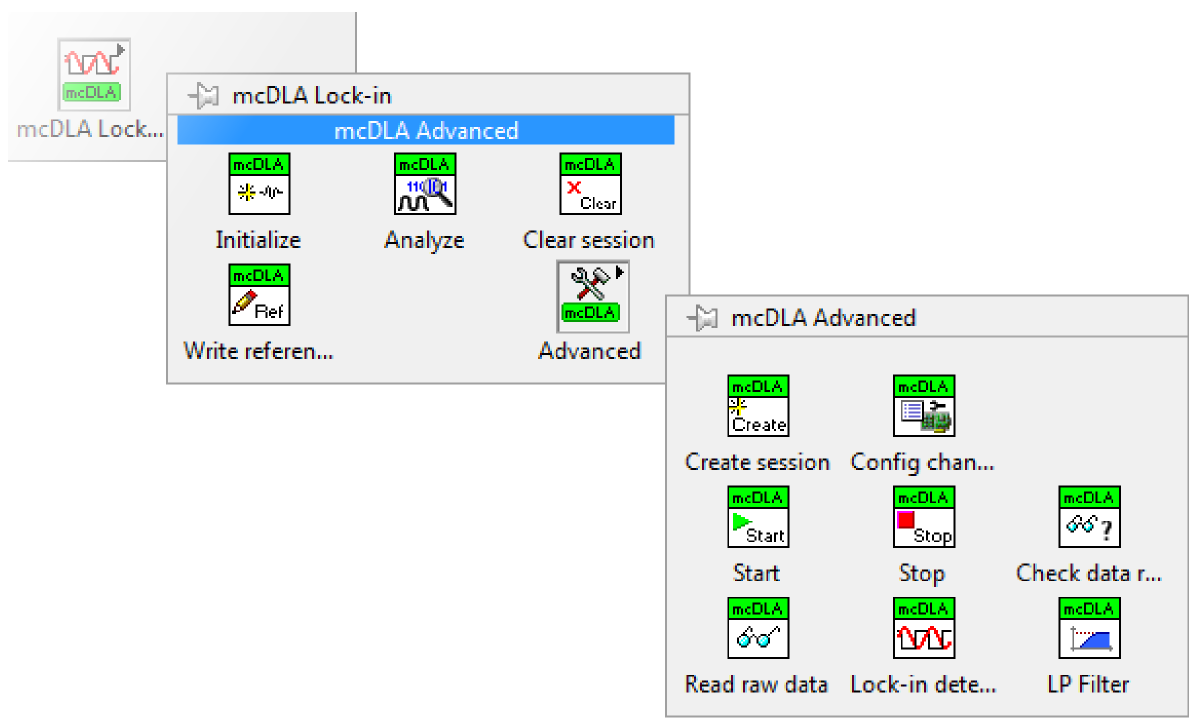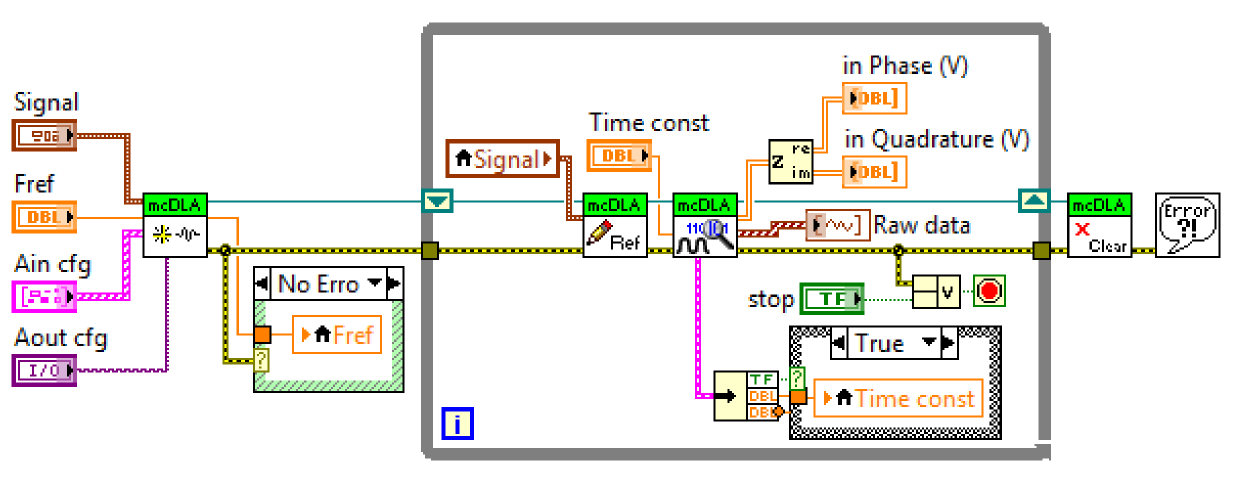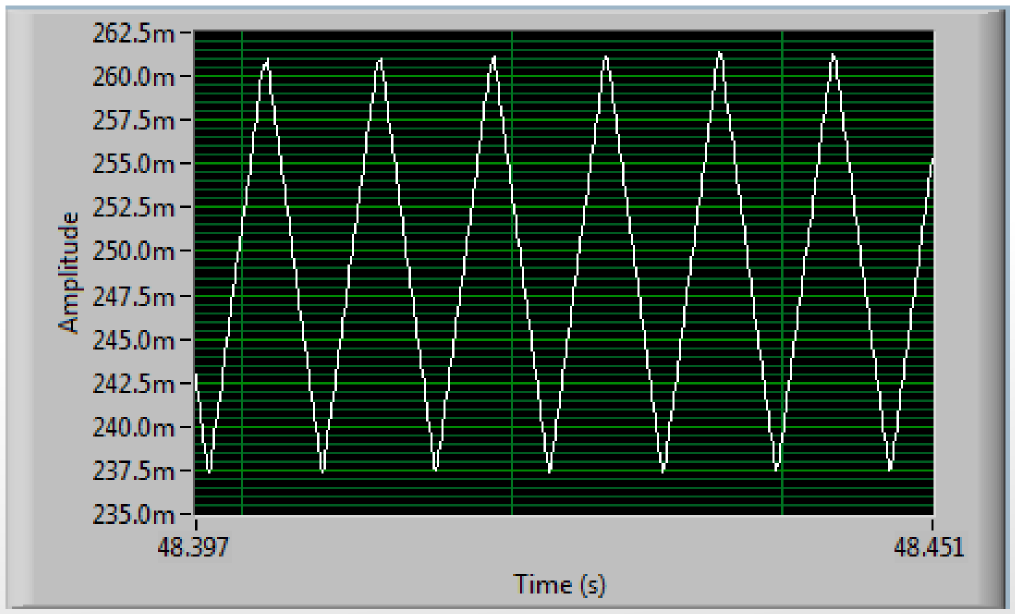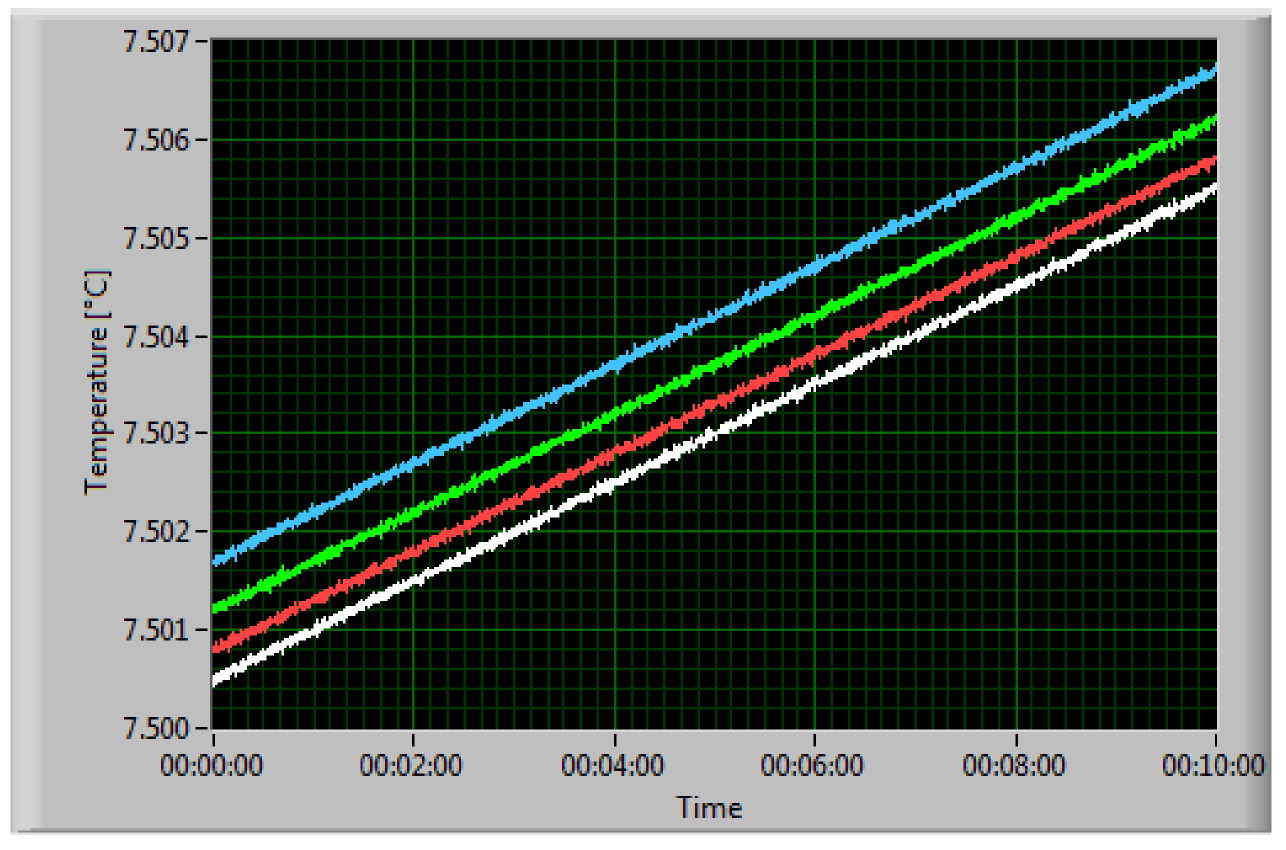
- LabVIEW 2013 Add-On
- simplicity with Basic VIs
- flexibility with Advanced VIs
- Works with any NI-DAQmx device
- Multiple channel, multiple harmonics
- For each of them, can extract any combination of
- modulus (R), phase (θ), and in-phase (X), in-quadrature (Y) components
- Reference frequency from 1 Hz to 100 kHz or more
- depending on the selected DAQmx hardware
- Ultra low frequency version on request (down to 10-3 Hz and less)
- Affordable substitute to boxed lock-ins for external reference systems
- e.g. optics experiments with pulsed or chopped light sources
- In internal reference mode, outstandingly precise measurements of
- resistance, temperature (PT100 or any other thermistors), strain gauge, LVDT, ...

A Lock-in Analyser is an instrument able to perform synchronous detection between a reference at frequency Fref and an input channel, to extract in-phase (X) and in-quadrature (Y) components, or modulus (R) and phase (θ).
Synchronous detection is only sensitive to components of the signal spectrum close to Fref , with a bandwidth determined by a low-pass filter with time constant tc. For example, tc = 1s corresponds to a bandwidth of only 0.24Hz, efficiently rejecting the noise lying out of this band.
A lock-in can be used to measure strain gauges, RTD devices, etc... Such AC measurements remove the influence of the preamplifier offset and can be set to work at a frequency where the preamplifier noise floor is flat, whilst DC measurements would be impacted by the larger 1/f noise and offsets (constant part and thermal drift). This significantly improves the Signal/Noise ratio and absolute accuracy.
The multiple channel Digital Lock-in Analyser, or mcDLA for short, is a LabVIEW Add-On which consists of a set of VIs for implementing a multiple-channel DLA. It is compatible with all DAQmx acquisition platforms (NI X-series and M-series boards, Digital Signal Analysis Series boards, cDAQ systems). It contains a palette mcDLA Lock-in placed in the Measurement I/O category and comes with examples. Only 3 VIs are required to build a complete data acquisition program with continuous signal generation via a DAC and synchronous multiple channel data acquisition with Lock-in analysis. In the following example, inserting a 4th VI (mcDLA Write reference.vi) allows to change the amplitude and shape of the reference, without stopping the mcDLA.

Many DAQmx data acquisition devices are scanning the analog inputs and multiplexing them to a single converter which introduces a delay between channels. The mcDLA automatically corrects for the related phase shifts. Devices with parallel, simultaneous sampling are automatically detected.
The sub-palette mcDLA Advanced gives access to more features, such as harmonic H2 (at 2 x Fref ) and H3 detections, simultaneously with H1.

In the above illustration, individual cycle demodulation, another advanced feature, allows a LVDT, driven by the mcDLA at 10kHz, to detect a displacement at 120Hz
Below is a real life example showing an mcDLA measurement of four Pt-100 immersed in cold water. The achieved resolution is better than 0.0001°C rms with more than 10 readings per second ! This corresponds to signals much lower than the LSB of the M-Series board used, even after amplification (see our AC measurements bundles for our recommended preamplification solutions).
The phase stability - not shown here - is also extremely high (about 10-6 rad).

Some configurations (such as pulsed light sources) require a DLA to be able to lock to an external reference. The mcDLA has VIs to measure the reference as an additional channel, detect its frequency and lock the demodulation to the fundamental of this signal. The phase stability is directly related to that of the reference.
Lock-in Amplifiers are available as separate instruments, able to measure one channel (two in best cases) at one harmonic. Our mcDLA package combined with an NI multiple channel acquisition board makes it simple and inexpensive to implement Lock-in Analysers with 8, 16, 32 or even more channels.

